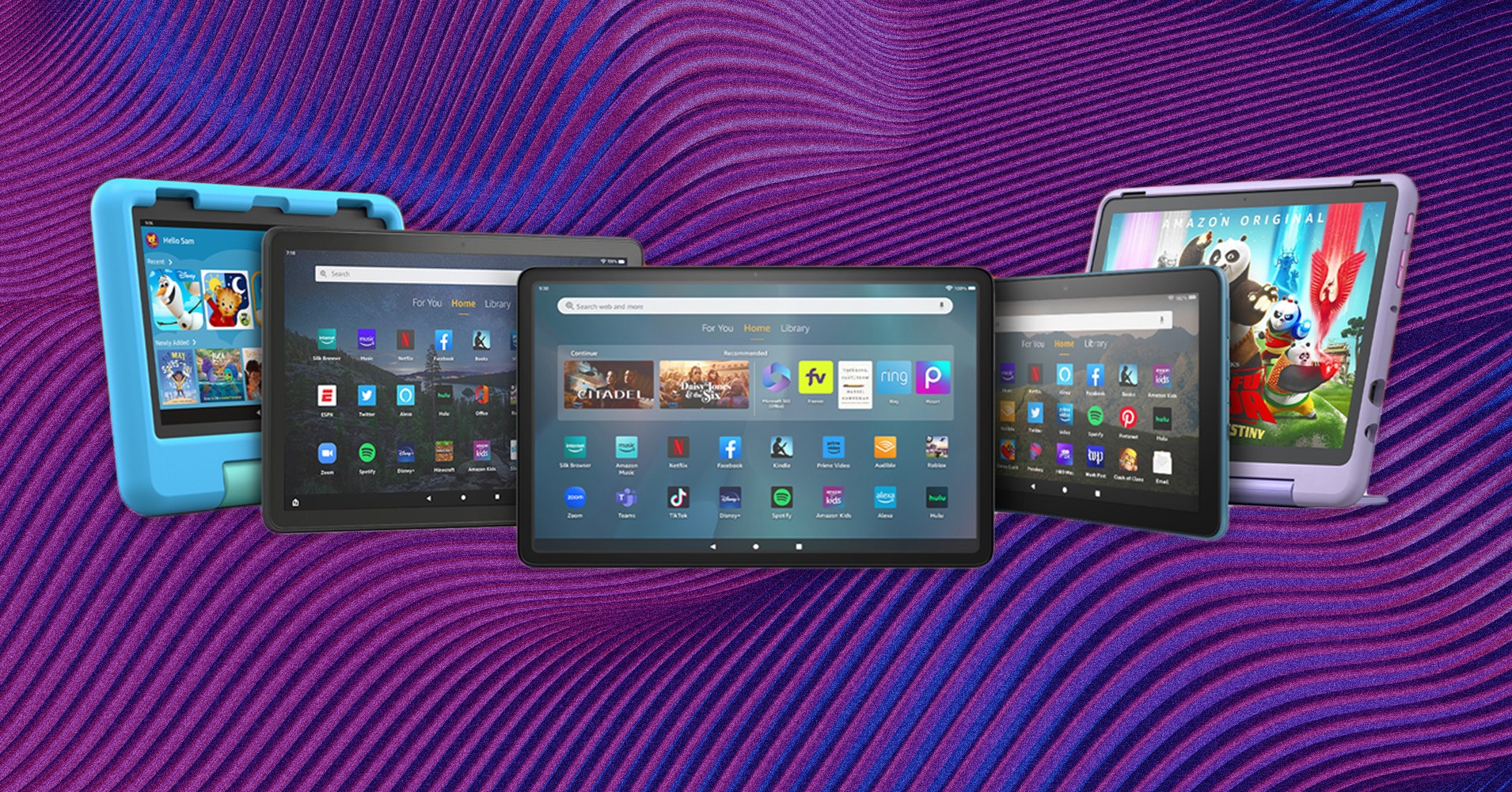WIRED
A faucet for Amazon content: If you subscribe to Amazon’s Prime service, you can consume all the included movies, music, TV, and books, shop for all the items you can get with its free two-day shipping, and browse your free Amazon photo storage. You can do most of the same things from an Android tablet or iPad, but the Fire OS interface is crafted specifically to deliver Amazon goods, with swipeable pages for each type of media Amazon sells.
Built “good enough”: Physically, Amazon’s Fire tablets are made of cheap-ish plastic, but they’re designed with enough care that the build quality won’t bother you too much. Wifi reception is excellent, and the front facing cameras have improved considerably in the last couple releases. The Kids Editions are also some of the best-quality tablets for kids, encased in a rugged bumper, and all have microSD slots so you can add extra storage. (We recommend this 128-GB microSD card for $17.) You can make them even more capable by following our guide to installing the Google Play Store on your Fire device. That will give you access to the full range of Android apps. (Note that some apps won’t work, but 99 percent of the apps out there for Android will run just fine.)
Cheap: Did we mention the price? They all cost $200 or less, save the new Max 11. If you stick to the cheaper models though, they’re a great value. You can also get them with Amazon lock-screen ads, which will lower your price by $15.
TIRED
Non-Amazon content is lacking: The greatest strength of these tablets is also their greatest weakness. If you aren’t an Amazon Prime subscriber and don’t plan to get your video, audio, or books from Amazon, the Fire tablet line is far less compelling. They do have Alexa, so that could be a plus, but again, that’s tied deeply into Amazon’s content library. You can download third-party apps like Netflix on Amazon’s Appstore, but the selection is far more limited than what’s available on Apple’s iPad or the Google Play Store on standard Android tablets. To help you get around this limitation, we put together a guide to installing the Google Play Store on your Fire device. Installing the Google Play Store gives you access to the full range of Android apps. In the end, you get a $60 tablet that’s capable of 95 percent of what a $330 iPad can do.
Old tech: The tech inside these tablets is old. The processors aren’t the fastest, and you’ll likely notice small fits of lag and a general lack of power compared to more expensive Android tablets. The touchscreens aren’t a responsive or sensitive as more expensive tablets. Since many of the apps for Fire OS are built with weak processing power in mind, you don’t notice it too much. The operating system is also dated (depending on which Fire tablet you’re buying), which could hide some of the weaknesses. Amazon’s latest Fire OS is a modified version of Android 11, which came out in 2020. Amazon keeps updating its tablets to some degree, but not nearly as often as it should.
Short warranties: Only the Fire HD 10 comes with a full one-year warranty. Oddly, the smaller devices come with 90-day warranties.
Special offers: Over time Amazon’s Special Offers ads have gotten more overt and annoying. We recommend you pay the extra $15 to buy a Fire tablet without them.

